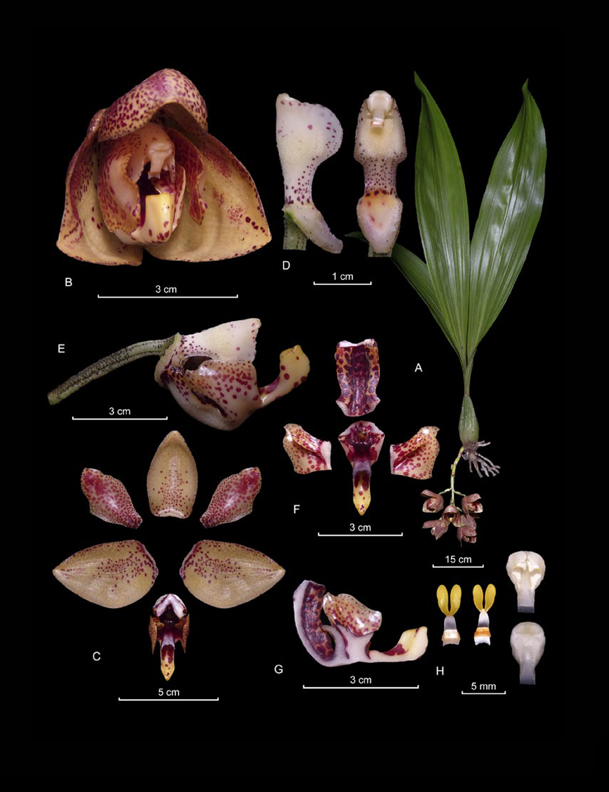
Acienta superba
Acineta superba (Kunth) Rchb.f., Ann. Bot. Syst. 6: 609. 1863.
Type: Ecuador. Province of Loja: “Loxa”, F.W.H. von Humboldt & A.J.A. Bonpland 3385 (holotype: P).
Illustrated specimen: Colombia. Tolima: Municipality of Villahermosa. 1979 m. 24 June 2017. M. Sierra-Ariza 01 (TOLI; LCDP voucher).
Etymology: From the Latin superbus, meaning “magnificent” or “splendid”, probably referring to the large size of the plants and the descending inflorescences with very fragrant flowers.
Acineta superba is recognized by the saddle shaped central callus with the basal and distal parts elevated, of intense vinaceous color. The lip has dolabriform (axe shaped) lateral lobes and near the apex of hypochile, the osmophore, a very pronounced structure in the form of a thick curved horn. The pollinarium is characterized by a bi-pointed or semilunar viscidium and a ligulate stipe. This species is variable in its morphology and coloration and has the widest distribution in the genus, ranging from Colombia to Peru. Acineta superba has a very strong pleasant fragrance of cinnamon, dominated by methyl cinnamate and has been observed to attract male bees of the genus Eufriesea (tribe Euglossini).